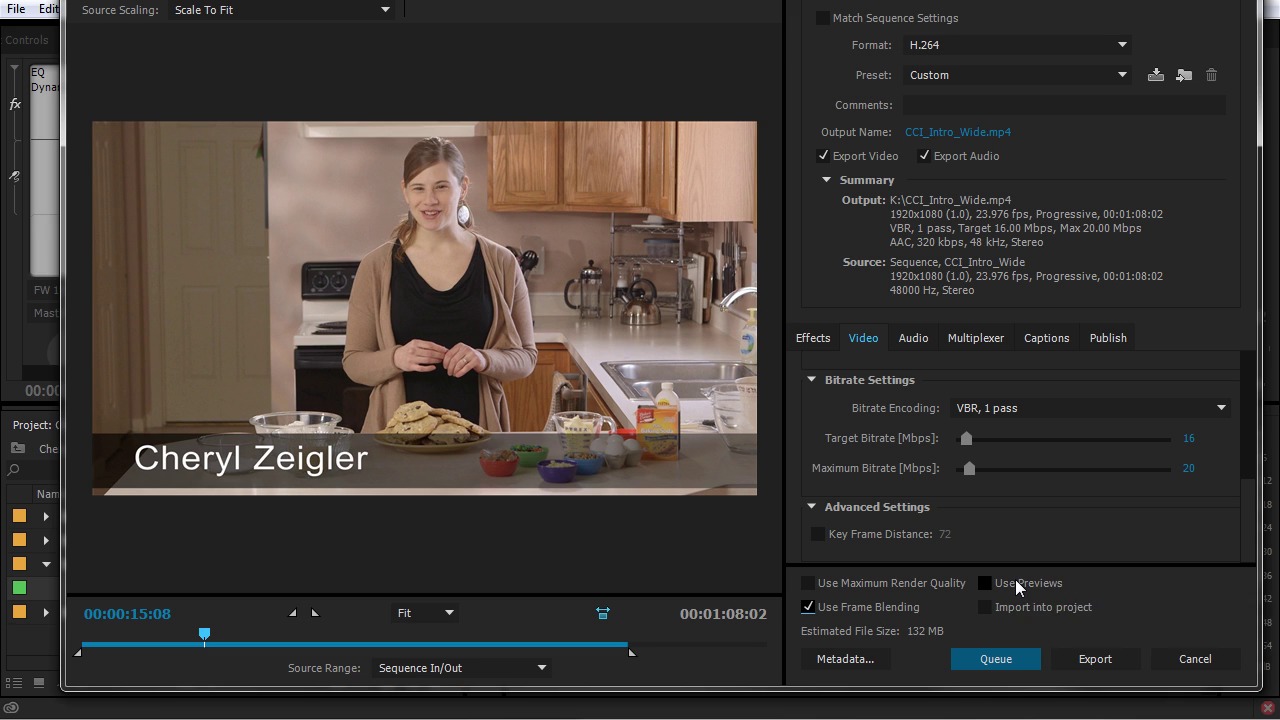

- RENDER SETTINGS FOR LIVE VISUALS HOW TO
- RENDER SETTINGS FOR LIVE VISUALS MOVIE
- RENDER SETTINGS FOR LIVE VISUALS DRIVERS
- RENDER SETTINGS FOR LIVE VISUALS WINDOWS
For example, if the magnification is 50%, choose Half from the Resolution menu. Note: To increase the rendering speed of RAM previews, set the resolution of the Composition panel to match the magnification. Quarter - Renders one-sixteenth of the pixels contained in the full-resolution image.Ĭustom - Renders the image at the horizontal and vertical resolutions that you specify. Third - Renders one-ninth of the pixels contained in the full-resolution image. Half - Renders one-quarter of the pixels contained in the full-resolution image-half the columns and half the rows. This setting gives the best image quality, but takes the longest to render. You can lower the resolution from the Render Queue Render Settings window.įull - Renders each pixel in a composition.
Lower the resolution for the composition. Substitute a low-resolution or still-image proxy for a source item when not working directly with that item. Collapse transformations for nested compositions. (Remember to select this option again before you render the composition for final output.) Restrict the influence of layer switches by choosing Edit > Preferences > General (Windows) or After Effects > Preferences > General (Mac OS), and deselecting Switches Affect Nested Comps. RENDER SETTINGS FOR LIVE VISUALS MOVIE
Render a completed composition as a movie so that After Effects doesn’t rerender the composition every time it is displayed. A good way to do this is with the Collect Files command.
Before rendering, put all of your source footage files on a local disk-not the one that the application runs from. To recombine projects, import all of the projects into a single project by choosing File > Import > File. Divide complex projects into simpler projects, and then recombine them before you render the finished movie.  Delete unused elements from your project. For example, you can avoid repeating an action that needs to happen only once, or you can postpone an action until it is more convenient for you. Also, by controlling when After Effects performs certain processing, you can greatly improve overall performance. Improve Performance By Simplifying Your Projectīy simplifying and dividing your project, you can prevent After Effects from using memory and other resources to process elements that you are not currently working with. Ideally, use three fast local disk drives: one for source footage files, one from which the application runs, and one for rendered output.Ģ. If your source footage files are on a slow disk drive (or across a slow network connection), then performance will be poor. When possible, keep the source footage files for your project on a fast local disk drive. Stop or pause resource-intensive operations in other applications, such as video previews in Adobe Bridge.
Delete unused elements from your project. For example, you can avoid repeating an action that needs to happen only once, or you can postpone an action until it is more convenient for you. Also, by controlling when After Effects performs certain processing, you can greatly improve overall performance. Improve Performance By Simplifying Your Projectīy simplifying and dividing your project, you can prevent After Effects from using memory and other resources to process elements that you are not currently working with. Ideally, use three fast local disk drives: one for source footage files, one from which the application runs, and one for rendered output.Ģ. If your source footage files are on a slow disk drive (or across a slow network connection), then performance will be poor. When possible, keep the source footage files for your project on a fast local disk drive. Stop or pause resource-intensive operations in other applications, such as video previews in Adobe Bridge. RENDER SETTINGS FOR LIVE VISUALS HOW TO
See the documentation for your operating system and computer for details on how to check the amount of installed RAM and how to install RAM. Optimum performance is achieved with computer systems with at least 2 GB of installed RAM per processor core.
Make sure that your system has enough RAM. See the documentation for your operating system for details. RENDER SETTINGS FOR LIVE VISUALS WINDOWS
To improve performance in After Effects, adjust the size of the paging file to a maximum of twice the amount of installed RAM-the default in Windows XP. Windows manages virtual memory using a paging file. Virtual memory enables the system to use hard disk space to store information normally stored in RAM.
Adjust the size of the virtual memory paging file (Windows only). Though After Effects can function without it, OpenGL accelerates various types of rendering, including rendering to the screen for previews Make sure that your system includes a display card that supports OpenGL 2.0 or later. This may include some applications that start automatically when the operating system starts. Quit applications that are not necessary for your work. RENDER SETTINGS FOR LIVE VISUALS DRIVERS
To download updates for drivers and plug-ins, go to the provider’s website.
Make sure that you’ve installed the latest versions of drivers and plug-ins, especially video card drivers. To check for and install updates, choose Help > Updates from the top menu in After Effects. Make sure that you’ve installed the current version of After Effects, including any available updates. Improve Performance Before Starting After Effects These suggestions will save your time, money (because a) time is money and b) you won’t need powerful hardware) and improve your general After Effects skills as well. So, we’ve decided to share the experience gathered by TemplateMonster video professionals and support team and provide you with some useful tips that will help you increase the rendering speed (based on the official help info from Adobe). Rendering is an essential operation that you have to perform to finalize your work in Adobe After Effects.






 0 kommentar(er)
0 kommentar(er)
